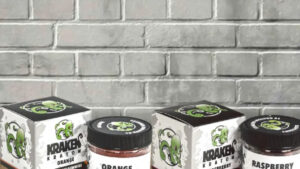
Eco-Friendly Roofing Options for Sustainable Homes
As homeowners become more environmentally conscious, the demand for sustainable building materials continues to rise. One area seeing a significant green transformation is roofing. Your roof isn’t just a protective barrier—it plays a critical role in your home’s energy efficiency and environmental impact. Choosing an eco-friendly roofing option can reduce your carbon footprint, lower your utility bills, and even increase your home’s value.
In this comprehensive guide, we’ll explore the best eco-friendly roofing options for sustainable homes, their pros and cons, and how services like Chimney Care Service can support your green roofing goals.
Why Choose Eco-Friendly Roofing?
Before diving into the options, let’s talk about why eco-friendly roofing matters. Here are some of the key benefits:
1. Energy Efficiency
Eco-friendly roofs are often designed to reflect sunlight or insulate better, helping maintain indoor temperatures. This reduces the need for air conditioning in summer and heating in winter.
2. Reduced Environmental Impact
Sustainable roofing materials are often recyclable, non-toxic, and manufactured using fewer resources.
3. Durability and Cost-Effectiveness
Many eco-roof options last longer than traditional asphalt shingles, which means fewer repairs and replacements over time.
4. Added Home Value
Energy-efficient homes are increasingly attractive to buyers, and a green roof can give you a competitive edge in the market.
1. Metal Roofing
✅ Why It’s Eco-Friendly:
Metal roofs are made from recycled materials like aluminum and steel and are 100% recyclable at the end of their lifespan. They reflect solar radiant heat, keeping your home cooler in summer.
🔍 Pros:
-
Extremely durable (can last 40–70 years)
-
Low maintenance
-
Lightweight and easy to install
-
Fire-resistant
⚠️ Cons:
-
Higher upfront cost
-
Can be noisy during rain or hail if not insulated properly
🔧 Sustainability Tip:
Combine metal roofing with solar panels for maximum energy efficiency. And don’t forget to call in a Chimney Care Service to ensure your chimney remains leak-free and properly integrated with the roof system.
2. Cool Roofing
✅ Why It’s Eco-Friendly:
Cool roofs use reflective paint, coatings, or materials to reflect more sunlight and absorb less heat. This helps reduce urban heat islands and lowers cooling costs.
🔍 Pros:
-
Lowers your energy bills
-
Available in various materials (shingles, tiles, paints)
-
Reduces roof surface temperature by up to 50°F
⚠️ Cons:
-
May require specific coatings to be reapplied every few years
-
Less beneficial in cold climates
🧰 Bonus Tip:
Combine cool roofing with proper attic ventilation and chimney sealing by professional Chimney Care Service providers to maintain airflow and prevent moisture buildup.
3. Clay and Concrete Tiles
✅ Why It’s Eco-Friendly:
Clay and concrete tiles are long-lasting, recyclable, and made from natural materials. They help regulate temperature thanks to their thermal mass properties.
🔍 Pros:
-
Lifespan of 50+ years
-
Fire-resistant and low-maintenance
-
Available in various natural colors and styles
⚠️ Cons:
-
Heavy (may require extra structural support)
-
More expensive to install
-
Can be brittle under heavy impact
🧱 Chimney Consideration:
These roofs pair well with brick or stone chimneys. Schedule a Chimney Care Service after installation to check flashing integrity and prevent leaks around the chimney area.
4. Green (Living) Roofs
✅ Why It’s Eco-Friendly:
Green roofs consist of vegetation planted over a waterproofing membrane. They provide insulation, absorb rainwater, and improve air quality.
🔍 Pros:
-
Natural insulation for your home
-
Reduces stormwater runoff
-
Excellent for urban areas to reduce heat
⚠️ Cons:
-
High installation and maintenance costs
-
Requires strong structural support
-
Needs regular watering and care
🌿 Maintenance Tip:
Don’t overlook your chimney on a green roof. Moss and moisture can damage the masonry. Routine Chimney Care Service ensures your chimney remains safe and efficient amid surrounding vegetation.
5. Recycled Shingles
✅ Why It’s Eco-Friendly:
These shingles are made from recycled materials like rubber, plastic, and wood fiber. They often mimic the appearance of slate or wood but are far more sustainable.
🔍 Pros:
-
Keeps waste out of landfills
-
Often more affordable than other eco-options
-
Durable and weather-resistant
⚠️ Cons:
-
Quality can vary by manufacturer
-
May not be accepted in some historical or regulated neighborhoods
♻️ Installation Tip:
Pair recycled shingles with energy-efficient windows and properly sealed chimneys. A certified Chimney Care Service can verify that no heat escapes through chimney leaks.
6. Slate Roofing
✅ Why It’s Eco-Friendly:
Slate is a natural stone material that can last over a century. Its durability means fewer replacements, and it’s fully recyclable.
🔍 Pros:
-
Extremely durable and long-lasting
-
Elegant, timeless look
-
Fire and mold-resistant
⚠️ Cons:
-
Very heavy and expensive
-
Fragile under certain conditions
-
Requires professional installation
🛠️ Professional Alert:
Any roofing material this heavy demands chimney stability. Always bring in a Chimney Care Service expert to inspect your chimney structure before installing slate roofing.
7. Solar Roofs
✅ Why It’s Eco-Friendly:
Instead of just placing solar panels on top of your roof, solar roofs use photovoltaic shingles that blend seamlessly with traditional roofing while generating electricity.
🔍 Pros:
-
Generates clean, renewable energy
-
Saves money on utility bills
-
Sleek, modern look
⚠️ Cons:
-
High upfront cost
-
May require battery storage for off-grid use
-
Needs professional design and installation
⚡ Power Pair:
Solar roofs + energy-efficient chimneys = a high-performance home. A Chimney Care Service can help prevent heat loss and smoke backdraft, keeping your sustainable home efficient.
Chimney Care: The Overlooked Element in Eco-Friendly Roofing
When considering eco-friendly roofing, it’s easy to overlook your chimney—but you shouldn’t. Here’s why:
-
Leaks & Moisture: Green roofs or clay tiles can cause water to pool around the chimney if flashing isn’t properly sealed.
-
Heat Loss: An unsealed or cracked chimney can undo the energy efficiency gained from your sustainable roof.
-
Safety: Creosote buildup or structural damage could cause fire hazards, especially with high-efficiency heating systems.
That’s where a trusted Chimney Care Service comes in. Regular chimney inspections, flashing repairs, and smoke sealing help your eco-roof perform at its best.
Choosing the Right Option for Your Home
When selecting an eco-friendly roofing option, consider the following:
| Factor | Things to Consider |
|---|---|
| Climate | Green roofs are great for cities; metal roofs for hot regions |
| Budget | Recycled shingles are cost-effective; solar roofs are an investment |
| Aesthetics | Clay tiles and slate offer classic looks; solar and metal offer modern style |
| Durability | Slate and metal last the longest |
| Chimney Status | Ensure compatibility with Chimney Care Services |
Final Thoughts
An eco-friendly roof is more than just a home improvement—it’s a commitment to sustainability. Whether you choose metal, slate, solar, or living roofs, the key is to think holistically. Your roof, chimney, insulation, and ventilation systems must work together to create an energy-efficient, comfortable, and safe environment.
And while roofing might steal the spotlight, never underestimate the role of a professionally maintained chimney. With the help of a reliable Chimney Care Service, you can ensure that every element of your home’s exterior is working together to save energy and protect the planet.
FAQs
1. Are eco-friendly roofing materials more expensive than traditional ones?
Yes, many sustainable roofing options have higher upfront costs. However, they often last longer and save money on energy bills, making them cost-effective over time.
2. Can I add eco-friendly features to my existing roof?
In many cases, yes. Cool roof coatings, solar panels, or even partial green roofing sections can be added to an existing structure, but you should consult a roofing expert first.
3. Why is chimney care important for sustainable roofing?
A damaged or poorly sealed chimney can cause leaks, heat loss, and safety hazards, undermining your energy savings. A trusted Chimney Care Service ensures your chimney complements your green roofing efforts.


